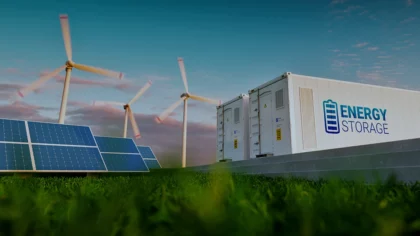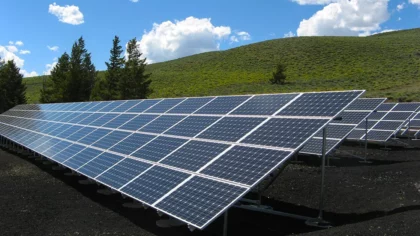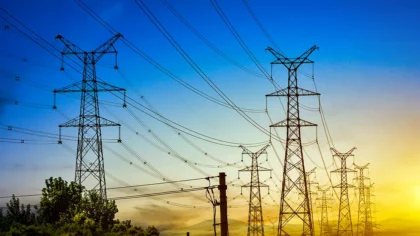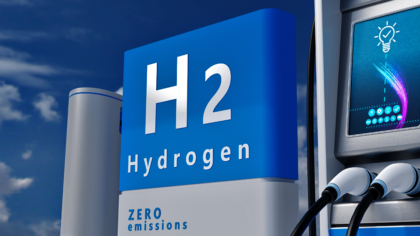Accelerate Productivity in 2025
Reignite Growth Despite the Global Slowdown
Executive Summary: What are the Top 10 Energy Storage Trends in 2026 & Beyond?
The energy storage market is projected to grow to USD 5.12 trillion at a CAGR of 21.7% by 2034, nearly seven times its current value. The top trends in energy storage are:
- AI Integration – Falling battery pack prices, USD 115/kWh in 2024, and policy support, such as US IRA tax credit,s are accelerating AI adoption. Startups enable predictive diagnostics and revenue optimization for over 1 GWh of assets. AI energy management systems improve charge-discharge cycles based on real-time grid signals, weather, and pricing data.
- Alternative Battery Technologies – Sodium-ion, iron-air, and lithium-sulfur batteries are gaining traction as raw material costs diverge. Sodium costs USD 0.05/kg versus lithium’s USD 15. China invested USD 830 million in solid-state battery R&D, and Toyota targets SSB EVs by 2027.
- Lithium-Ion Dominance & Cost Reduction – Li-ion batteries still lead, with a projected USD 140.51 billion market by 2033 and 13.3 GW expected to be deployed in the US in 2025. LFP chemistry powers 80% of new stationary storage projects.
- Grid-Scale Energy Storage – The global market is expected to grow 31% YoY to USD 9.9 billion in 2025. Emerging systems like vanadium redox flow (2.3 GWh deployed) and gravity-based solutions diversify beyond lithium, while reducing curtailment and balancing renewable loads.
- Hydrogen and Thermal Energy Storage – The hydrogen storage market will double from USD 16.6 billion in 2024 to USD 31.04 billion by 2033. Thermal storage will reach USD 57.7 billion by 2034. Startups offer safer, long-duration storage for seasonal grid needs, with sand and solid hydrogen as core mediums.
- Hybrid Energy Storage – Hybrid systems are set to grow from USD 9.79 billion in 2025 to USD 30 billion by 2035. These systems increase battery life by 40% and reduce energy costs.
- Battery Management Systems – The BMS market will hit USD 37.1 billion in 2035, with AI-BMS solutions projected to grow from USD 3.4 billion in 2024 to USD 18.5 billion by 2032. Eatron’s chip-based system showed a 25% increase in battery life.
- Decentralization – Over 7000 operational microgrids support remote energy access. France and the Netherlands are piloting vehicle-to-grid (V2G) initiatives, such as Renault’s bidirectional fleet. Smart inverters reduce grid losses by 13% and congestion by 16%.
- Long Duration Energy Storage – The LDES market will grow from USD 4.84 billion in 2024 to USD 10.43 billion by 2030. Curtailment losses, GBP 1.5 billion in the UK and EUR 3.13 billion in Germany, highlight LDES’s importance in renewable integration.
- Circular Economy – EU mandates digital passports for greater than 2kWh batteries by 2027. Startups lead reuse initiatives, offering 10+ years of second-life storage and smart BMS integration, while reducing emissions and material costs.
Read on to explore each trend in depth – uncover key drivers, current market stats, cutting-edge innovations, and energy storage leading innovators shaping the future.
Frequently Asked Questions
1. What is the energy storage market trend?
The global energy storage market is experiencing rapid growth, with a projected CAGR of 14.20% from 2025 to 2034. The growth is driven by renewable energy integration, grid stability needs, and rising electric vehicle adoption
2. What are the energy storage trends?
Key trends include advancements in lithium-ion and solid-state batteries, hybrid energy storage systems, long-duration storage solutions, smart grid integration, and the rise of virtual power plants (VPPs).
3. What are the new technologies for energy storage?
Emerging technologies include iron-air batteries, sand batteries, hydrogen storage, and solid-state batteries. It also includes gravity-based systems like water batteries and train-track energy storage.
Methodology: How We Created the Energy Storage Trend Report
For our trend reports, we leverage our proprietary StartUs Insights Discovery Platform, covering 7M+ global startups, 20K technologies & trends plus 150M+ patents, news articles, and market reports.
Creating a report involves approximately 40 hours of analysis. We evaluate our own startup data and complement these insights with external research, including industry reports, news articles, and market analyses. This process enables us to identify the most impactful and innovative trends in the energy storage industry.
For each trend, we select two exemplary startups that meet the following criteria:
- Relevance: Their product, technology, or solution aligns with the trend.
- Founding Year: Established between 2020 and 2025.
- Company Size: A maximum of 200 employees.
- Location: Specific geographic considerations.
This approach ensures our reports provide reliable, actionable insights into the energy storage innovation ecosystem while highlighting startups driving technological advancements in the industry.
Innovation Map outlines the Top 10 Energy Storage Trends & 20 Promising Startups
For this in-depth research on the Top 10 Energy Storage Trends & Startups, we analyzed a sample of 3400+ global startups & scaleups. The Energy Storage Innovation Map created from this data-driven research helps you improve strategic decision-making by giving you a comprehensive overview of the energy storage industry trends & startups that impact your company.
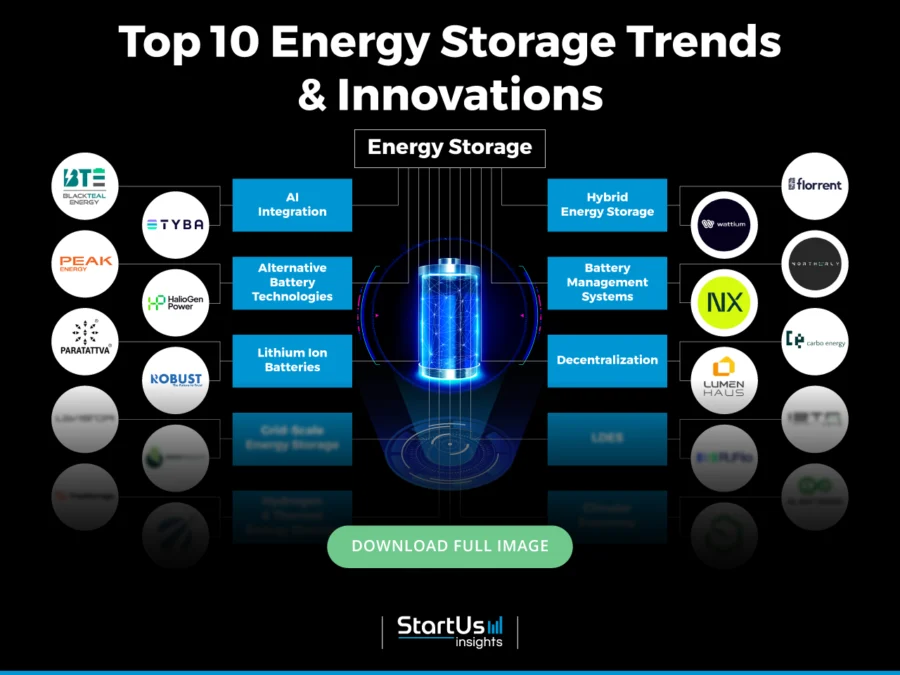
Tree Map reveals the Impact of the Top 10 Energy Storage Trends
Based on the Energy Storage Innovation Map, the Tree Map below illustrates the impact of the top 10 recent trends in energy storage. AI algorithms analyze energy storage data to highlight patterns and anomalies for upkeeping batteries and other energy storage devices. This modernizes the storage infrastructure and enables the rolling out of new battery chemistries with higher energy densities and improved performance characteristics.
Meanwhile, startups offering grid-scale storage solutions add scale to the energy storage ecosystem, making grids reliable. Decentralized energy storage also reduces grid congestion and supports microgrid installations. The detailed trend analysis shows how innovations in energy storage technology drive industries towards sustainability and resilience.
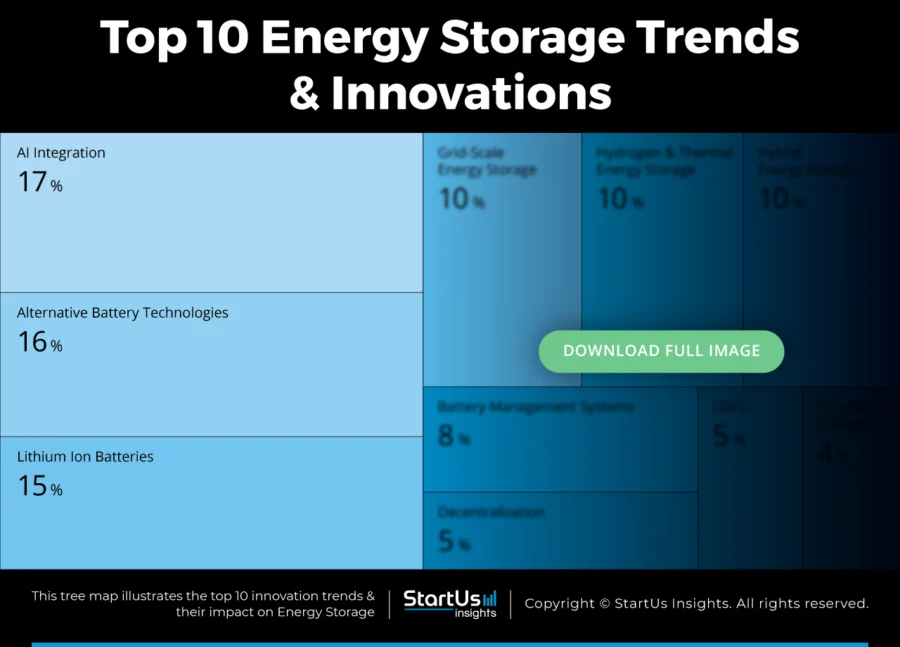
Global Startup Heat Map covers 3400+ Energy Storage Startups & Scaleups
The Global Startup Heat Map showcases the distribution of 3400+ exemplary startups and scaleups analyzed using the StartUs Insights Discovery Platform. It highlights high startup activity in Western Europe and the United States, followed by India. From these, 20 promising startups are featured below, selected based on factors like founding year, location, and funding.

Want to Explore Energy Storage Innovations & Trends?
Top 10 Emerging Energy Storage Trends [2026 and Beyond]
1. AI Integration: Battery Pack prices fell to USD 115/kWh in 2024
The energy transition investment landscape reached USD 2.1 trillion last year, growing 11% annually. This highlights substantial capital flows supporting clean energy infrastructure. Supportive policies also play a crucial role, with the US Inflation Reduction Act introducing tax credits for energy storage.
Further, declining battery costs are creating favorable market conditions for AI integration, with lithium-ion battery pack prices hitting a record low of approximately USD 115 per kilowatt-hour last year, representing a 20% decrease year over year (YoY).
For instance, AI integration in energy storage enables predictive maintenance solutions that utilize machine learning to analyze vast datasets. These datasets include battery performance metrics, environmental conditions, and historical degradation patterns that identify anomalies before it’s too late. AI systems replace traditional maintenance approaches that rely on scheduled check-ups by detecting early signs of wear and potential failures. This minimizes unplanned downtime and extends battery life.
Further, AI-driven energy management systems analyze real-time electricity demand, weather forecasts, and pricing fluctuations to optimize charge-discharge cycles. These energy management systems ensure stored energy is used at peak efficiency while reducing waste and improving grid stability.
Apart from the operational aspects, NREL’s multi-scale battery physics modeling utilizes machine learning to improve battery materials and determine degradation mechanisms.
Notable funding rounds also demonstrate growing investor interest in AI-driven energy storage solutions. For example, Tyba secured USD 13.9 million in a Series A funding led by Energize Capital to scale its AI-enabled energy forecasting, trading, and optimization platform. The company works with leading energy companies and supports operations of over 1GWh of storage assets in Texas and California.
Additionally, SES AI Corporation announced contracts totaling up to USD 10 million with two major global OEM partners to use AI in developing new electrolyte materials for high-performance Li-Metal and Li-ion batteries aimed at automotive applications.
BlackTeal Energy offers an AI-based Ultrasonic Battery Management System
US-based startup BlackTeal Energy offers an AI-based Ultrasonic Battery Management System (AI UBMS). The startup’s solution injects ultrasonic pulses into each cell and applies machine-learning models to the returning echoes to compute state-of-charge, state-of-health, and temperature while issuing real-time control commands.
The technology continuously executes automated balancing, smart diagnostics, and dynamic controls that equalize cells, flag anomalies, and fine-tune charge and discharge profiles. The solution is backward-compatible, making it interchangeable with high-voltage and low-voltage architectures. This allows it to scale smoothly from residential storage units to utility-scale arrays.
Tyba simulates Energy Storage Projects
Tyba is a US-based startup that delivers an AI-based simulation platform to optimize battery storage operations. The software automatically assigns available offtake approaches according to the location. It then analyzes the storage project details, such as battery size, cycling constraints, and co-located generations.
The startup’s platform combines historical energy price data, project constraints, and market rules to develop daily strategies to provide a revenue forecast of the project. It also visualizes how the asset would operate and the revenue it would bring.
Tyba allows the modeling of multiple design scenarios to offer transparent simulations that quantify production, commercial outcomes, and risk. This enables developers, owners, and operators to maximize revenue, manage risk, and scale profitable storage portfolios while advancing grid decarbonization.
2. Alternative Battery Technologies: Sodium costs just USD 0.05/kg, far cheaper than lithium at USD 15/kg
The rising demand for stable, sustainable energy steers countries towards the large-scale acquisition of battery storage solutions that are predominantly lithium-based. But volatilities in the lithium market, fueled by geopolitical tensions, push utilities and automakers to move towards alternative battery chemistries like sodium-ion and iron-air. This realignment contributes to a projected market size of USD 45.9 billion by 2032 for the alternative battery technology market.
For instance, sodium’s abundance and low cost at just USD 0.05 per kilogram compared to lithium’s USD 15. This results in a 300-fold price advantage for raw materials added to this transition.
Additionally, the drive to enhance energy density and eliminate flammable battery elements is enabling solid-state battery (SSB) innovations to gain momentum. This shift in battery research entices investments like the one made by China last year, amounting to USD 830 million for developing SSBs.
Automakers like Toyota are also actively investing in alternative battery research with the aim of releasing an SSB-powered electric vehicle by 2027.
Moreover, other battery chemistries are gaining traction with supermaterial application companies like Lytens investing USD 1 billion into a lithium-sulfur gigafactory. This avoids the need for rare-earth metals like cobalt, nickel, and manganese, further reducing supply chain risks and cost.
New discoveries in nanotechnology, like silicon nanowires and nanoparticles, lead to the introduction of silicon-based anodes that are compact and offer higher energy density than traditional lithium batteries.
Additionally, researchers create bio-based batteries that are compatible with flexible substrates and operate in mild processing conditions. This favors energy storage applications in electronics, IoT devices, and medical wearables.
Peak Energy provides Sodium-ion Batteries
US-based startup Peak Energy develops sodium-ion batteries that improve the resilience of grids depending on renewable energy sources. As a cheap alternative to lithium, sodium is more abundant and domestically available, making it free from fragile supply chains, volatile prices, and damaging extraction methods.
Peak Energy optimizes its sodium-ion batteries from cell to system for efficient use in energy storage systems (ESS). This enables the easy augmentation and servicing of ESS configurations. Compared with the traditional LFP solution, the startup’s batteries exhibit a lower carbon footprint, higher safety performance, and wider operating temperatures.
The lower cost of raw materials also reduces the upfront cost of sodium-ion battery systems in comparison to lithium-ion systems.
HalioGen Power develops Membraneless Redox Flow Batteries
UK-based startup HalioGen Power replaces traditional redox flow batteries with a membraneless alternative. The startup’s new battery technology removes the need for expensive, non-recyclable, and flammable membranes in redox flow batteries. The absence of this membrane eliminates the need for complex cooling systems that further decrease cost.
The startup’s redox flow batteries offer a high round-trip efficiency to provide optimal performance. It also withstands temperatures ranging from -50 ° Celsius to 50 ° Celsius. This ensures a longer lifespan, improving the sustainability of the battery system. HalioGen Power’s system thus offers utilities, heavy industries, and the transportation sectors a cost-effective and environmentally friendly alternative to conventional flow batteries.
3. Lithium-Ion Dominance and Cost Reduction: Li-ion batteries are projected to reach USD 140 B by 2033
Li-ion batteries are a key component of energy-storage investments, with their global market value growing at a compound annual growth rate of 11.14%, predicted to reach USD 140.51 billion by 2033.

Credit: BloombergNEF
Additionally, developers have installed 9.2 GW of new Li-ion storage across the US by November 2024, and grid-scale deployments are expected to reach 13.3 GW in 2025, showing rapid penetration.
As over-capacity and LFP usage increase, pack prices are expected to drop by a further USD 3/kWh in 2025, after reaching USD 115/kWh in the last year.
Lithium’s cost-led, cobalt-free dominance is highlighted by the fact that lithium-iron-phosphate meets 56% of cathode demand and provides 317 GWh of 2024 energy-storage cell exports. According to the International Energy Agency (IEA), LFP currently provides 80% of new stationary storage projects globally and about 40% of EV batteries.
Last year, sixty-one battery firms that deal with anodes, cathodes, electrolytes, and production software raised USD 6.9 billion. This indicates the movement of private investment toward more affordable, high-performing Li-ion materials.
Li-ion maintains its dominance in both stationary systems and electric vehicles by improving energy density and cycle life through a series of electrode advancements and optimized cell designs.
Together, growing scale, better chemistries, and manufacturing learning curves reduce prices and increase adoption, which solidifies Li-ion as the standard storage technology.
Paratattva produces Compact Li-ion Storage Solutions
Indian startup Paratattva develops Li-ion battery packs for various electric vehicles and energy storage applications. The startups’ battery packs for two-wheelers, three-wheelers, and bicycles provide high energy density, reliability, and long lifespan, which ensures a sustainable driving experience.
Its proprietary cell design enables the construction of compact and light architecture that packs a higher amount of energy in the same space. This design increases the range of vehicles while ensuring the cells operate safely in hot weather conditions with a wide operating range.
Paratattva also offers an AI-powered battery software that keeps tight control on battery parameters, ensuring a longer battery life.
Robust Energy offers Custom Li-ion Battery Packs
Robust Energy is a startup based in the UAE that designs and manufactures customized, scalable, and robust Li-ion battery packs. The startup’s customized solutions cater to the energy storage requirements of multiple applications like solar power, marine, e-mobility, IoT, and medical devices.
It takes its clients to various stages of development and prototyping to ensure the energy requirements are met while complying with regulatory standards. The final test and optimization phase fine-tunes the custom configuration to maximize performance and robustness.
4. Grid-Scale Energy Storage: Grid-scale installations reached 12 314 MW of power and 37,143 MWh of energy capacity
As renewable energy penetration rises and electricity markets evolve, grid-scale storage plays an important role in shaping the energy storage sector. These high-capacity storage solutions change the operational characteristics of traditional grids to bring stability during renewable integration.
The global market for grid-scale energy storage is expanding at a rapid rate, including in terms of both geography and technology. The market is expected to grow by 31% year over year, predicted to reach USD 9.9 billion in 2025.
The 12.3 GW of installations across all energy storage segments in 2024 indicates a 33% increase from the previous year. In particular, grid-scale installations had a combined power capacity of 12 314 MW and an energy capacity of 37 143 MWh. This represents an increase of 33% and 34%, respectively, over 2023.
Additionally, grid modernization, growing project pipelines, and declining battery prices will drive grid-scale storage capacities to increase rapidly through 2025. This places flexible capacity at the center of global renewable integration plans.
Global deployment patterns reveal similar growth trajectories. Installations will reach 94 GW (247 GWh) of new capacity globally in 2025, which is around 35% more than the additions in 2024. This steady rise suggests that the market is now entering a phase of systematic, large-scale deployment after progressing past early adoption phases.
In the last year, 98% of new battery energy storage system installations were lithium-ion batteries, maintaining their market leadership. However, new technologies are entering the market with deployments increasing by more than 300% in 2024 compared to 2023. Vanadium redox flow batteries, which store energy for more than eight hours, had a breakthrough year, with an estimated 2.3 GWh deployed worldwide.
The development of various storage technologies, including compressed air energy storage, gravity-based systems, thermal storage, and innovative electrochemical designs, diversifies the grid storage models. These technologies also utilize more sustainable modes of energy storage to reduce the environmental impact of grid-scale storage systems.
The requirement to balance intermittent solar and wind power is also a factor driving the expansion of grid-scale energy storage. These storage systems store the surplus renewable power during generation and release it at times of peak demand. This improves grid reliability and enables better utilization of renewable assets.
As renewable energy sources make up a greater share of the generation mix, grid operators are realizing how important energy storage is to preserving system stability. As a result, grid-scale energy storage allows grid operators to control voltage support, frequency regulation, and backup power during blackouts.
Levistor uses Flywheels to store Energy
UK-based startup Levistor develops a flywheel energy storage system that provides rapid bursts of high-output energy on demand. The startup system called Cyclocell employs a proprietary laminated flywheel design. This design eliminates the need for expensive containment systems found in conventional solid flywheels. It also makes it inherently safer and more cost-effective, ensuring reliable, high-performance energy storage for EV applications.
Levistor also utilizes easily sourced, reusable, and recyclable materials that make the solution more sustainable. Further, the system’s modular design adapts to any power-boosting need from home use to grid-scale applications.
Green Gravity offers Gravity Storage solutions
Green Gravity is an Australian startup that develops, installs, and operates gravitational energy storage systems. The startup’s energy storage system moves heavy weights vertically in legacy mine shafts to capture and release the gravitational potential energy of the weights.
Its system uses no processed chemicals and has no performance degradation. The vertically moving weights enable high round-trip efficiency, and the reuse of mine shafts contributes to a circular economy and lowers costs.
The technology combines with wind and solar power to improve the economics of operations. This leads to a faster and lower-cost transition away from fossil fuels.
5. Hydrogen and Thermal Energy Storage: Hydrogen market will reach USD 31 B by 2033; thermal storage, USD 57 B by 2034
The global markets for both hydrogen and thermal energy storage are expanding rapidly. The hydrogen energy market reached USD 16.6 billion last year, and projections indicate it will double to USD 31.04 billion by 2033. The thermal energy storage market is also set to reach USD 57.7 billion by 2034.
The growth in these energy storage solutions indicates the need for clean energy storage to support grid flexibility and decarbonize hard-to-abate sectors. The falling costs of hydrogen production also increase its competitiveness with fossil-based alternatives.
Advancements in cryogenic storage and material-based storage are overcoming bulk storage challenges. For thermal energy storage, new materials, like advanced salts and composites, and improvements in system designs enhance performance and cost-effectiveness.
Hydrogen storage solutions suit long-duration, seasonal storage systems that decarbonize heavy industries and the transportation sector. Thermal energy systems perform well in short-to-medium duration applications and improve the efficiency of heating, cooling, and industrial processes.
TheStorage provides Electrified Thermal Storage
Finnish startup TheStorage provides sand-based thermal energy storage systems for grid-scale use. Its patent-pending electric heater uses electricity from renewable sources or from the grid when the prices are low to heat up ordinary sand. The hot sand holds this heat in an insulated silo. During discharge, this heated sand flows through a proprietary heat exchanger, transferring energy to another working medium. This includes steam, superheated steam, thermal oil, hot air, or pressurized hot water, depending on process requirements.
TheStorage offers customized storage systems with the desired charging, discharging, and storage size. The system allows for simultaneous charging and discharging. It provides maximum heat power at all times and reacts to peak demands. The easy-to-access components provide a thermal energy storage system with minimal downtime and cost of maintenance.
eRevo offers Building-integrated Hydrogen Ecosystems
eRevo is a Swiss startup that offers building-integrated hydrogen energy storage systems. The startup’s integrated Power-to-X system includes electrolysis, solid hydrogen storage, fuel cell, heat management, including heat recovery, short-term buffer storage, and energy intelligence control.
eRevo’s system releases the entire stored energy without self-discharge. The solution is fully recyclable, enabling minimal operating costs and a high ecological balance. It also requires no complex hydrogen compression, eliminating the safety risks of handling hydrogen. Thus offering an efficient and easy-to-integrate energy solution for the public sector as well as property developers.

6. Hybrid Energy Storage: HESS boosts battery life by 40%, power delivery by 60%, and keeps efficiency over 90%
With a market size of USD 9.79 billion in 2025 and a projected 11.85% CAGR of USD 30 billion by 2035, hybrid energy storage indicates its potential to move beyond pilot projects.
With complementary technologies, hybrid energy storage systems optimize energy density and power density characteristics. Battery-supercapacitor systems, battery-flywheel combos, and pumped hydro-battery hybrids are the most common types; each is designed to meet specific operational needs.
For example, battery-supercapacitors and battery-flywheels are suitable for situations requiring large bursts of power within a second, while pumped hydro-batteries have slower response time but offer stable power for longer durations.
Performance improvements extend beyond efficiency gains. HESS achieves up to a 40% increase in battery cycle life and a 60% improvement in power delivery while maintaining system efficiency above 90%.
A Spanish renewable plant paired pumped-hydro with batteries and reported a 27% reduction in annual energy costs. This demonstrates the economic upside of mixing long- and short-duration storage.
According to one study, hybrid batteries outperform single-technology systems by 14.3% at rated load, offer an efficiency of 56.6% of peak load, and reduce capital expenditure by shared converters.
The development of high-capacity, high-performance hardware drives scale. The US storage capacity increased at a rate of more than 30% annually since 2013. This is as a result of advancements in power electronics and control platforms that allow batteries, super-capacitors, flywheels, and pumped hydro to function as a single asset.
florrent develops High Energy Density Supercapacitors
US-based startup florrent develops high-energy density supercapacitors for multiple energy flow applications, including hybrid energy storage systems. The startup’s supercapacitors improve battery safety, extend system lifetime, and reduce cost and footprint.
Florrent’s supercapacitors solve high-power instability problems on the sub-minute time scale. This delivers the same duration of power stability coverage in a smaller footprint, or longer coverage in the same footprint. The higher power stability overcomes the variability of renewable energy sources.
Wattium produces Hybrid Batteries
Spanish startup Wattium develops a sustainable hybrid battery solution using carbon and organic waste nanomaterials. The startup’s supercapacitor-based technology enables fast charging.
The hybrid construction enables up to 30 000 cycles, ensuring extended lifespan. The lithium-free chemistry with organic waste materials provides a sustainable and cost-effective solution for EVs, stationary energy storage, AGVs, and high-end transportation. The absence of non-reacting also simplifies the manufacturing process and reduces costs.
7. Battery Management Systems: The global BMS market will reach USD 37 B by 2035
With the market value expected to reach USD 37.1 billion in 2035, the worldwide BMS industry is exhibiting impressive growth. This significant expansion illustrates how important BMS is to facilitate the broad use of energy storage in commercial, residential, and utility-scale applications.
The adoption of electric vehicles contributes to the majority of this increase. The automotive BMS market alone is expected to grow from USD 6.53 billion in 2025 to USD 15.65 billion by 2030.
The important development in battery management for energy storage applications is the incorporation of artificial intelligence. AI-powered BMS solutions go beyond conventional monitoring to offer real-time performance improvement, intelligent load optimization, and predictive maintenance.
The market for AI-driven battery management solutions is projected to grow from its 2024 valuation of USD 3.4 billion to USD 18.5 billion by 2032.
For instance, Eatron introduced an AI-BMS-on-chip system that enables more precise state-of-charge and state-of-health forecasts. The solution demonstrated a higher battery life of up to 25% and unlocked 10% more useful capacity.
Northerly offers Cloud-assisted BMS
Swedish startup Northerly’s cloud-assisted BMS combines data science, distributed machine learning, and model-based control to improve the performance and life of batteries. It overcomes the legal and practical issues of a traditional cloud-based platform by allowing fast and efficient data transfer. The startup’s platform is also adaptable to comply with all regional legal requirements of data handling.
Northerly’s software monitors and protects single cells for diagnostics. It maximizes energy usage efficiency for optimized user case scenarios. The BMS also reduces battery degradation, extending battery life. The solution in this way increases safety, reliability, and optimized usage of battery systems.
NX Technologies enables Cell Chemistry-agnostic BMS
Spanish startup NX Technologies offers a pyrofuse-ready and 18s-capable BMS to protect and extend battery life in automotive and energy storage applications. The startup’s cell chemistry-agnostic BMS allows charge, discharge, and pre-charge control for battery systems up to 1000V.
The system also enables additional peripheral control provision for heating, cooling, and fans. Additionally, the startup offers DeveLinkSTUDIO, a software tool for calibrating sensors, changing product parameters, flashing software updates, and introducing parameter tables. The solution in this way enables end-to-end visibility for battery storage systems and facilitates early-stage anomaly detection.
8. Decentralization: Distributed energy storage is set to grow at a 9.8% CAGR, reaching USD 15 B by 2034
With the rapid expansion and diversification of grid energy sources, decentralized storage enhances energy security. It provides backup power during outages and reduces grid congestion. These spread-out storage systems enable the creation of microgrids in remote and disaster-prone regions.
The market for distributed energy storage systems is thus expected to develop at an impressive CAGR of 9.8% from its 2024 valuation of USD 5.89 billion to USD 15 billion by 2034.
Decentralized storage systems take up grid moderation operations like reactive power compensation, frequency management, and voltage regulation on a microgrid scale. This reduces the operational pressure on central control stations.
Further, the smart inverters controlling decentralized systems allow energy storage systems to supply grid services and absorb excess renewable generation. Recent deployments have shown impressive performance gains, such as a 150% increase in PV penetration, a 13% decrease in power losses, and a 16% reduction in feeder congestion.
Electric vehicles give electricity back to the grid thanks to vehicle-to-grid (V2G) technology, which advances decentralized storage. V2G technology is being actively tested in a number of nations; under the Renault 5 initiative, France became the first to commercially offer V2G. With 500 Renault R5 E-Tech cars and 60 bidirectional charging stations set up in Utrecht, the Netherlands, Renault has introduced the first extensive car-sharing program in Europe utilizing V2G technology.
With over 7000 operational microgrids reported globally, microgrid deployments are growing quickly and mostly serving underprivileged and remote locations. These systems lower transmission losses, improve grid resilience, and offer localized energy solutions.
Carbo Energy provides a Grid-edge Distributed Energy Resource Management System (DERMS)
Argentinian startup Carbo Energy offers a grid-edge DERMS that co-optimizes customer and virtual power plant values to extract the maximum from battery storage systems. Carbo OS is the startup’s platform that continuously monitors battery health, performance, and efficiency, providing real-time insights and alerts to maximize system longevity.
Carbo Energy’s adaptive control algorithms optimize charging and discharging cycles based on specific usage patterns, energy prices, and grid conditions. It also integrates with existing energy management systems, renewable generation, and grid infrastructure through standard APIs and protocols. These features allow energy providers, utilities, and businesses to maximize the value of their energy storage assets.
LumenHaus supplies a Home Energy Storage System
LumenHaus is a German clean energy startup that provides an energy storage system that serves as a power bank for homes. SunSaver is the startup’s AI-integrated storage system that augments the abilities of domestic solar panels by analyzing consumption and optimizing energy flows. This enables prosumers to increase the effectiveness of their solar installations and maximize savings on energy costs.
SunSaver offers a higher charging and discharging efficiency in comparison to traditional systems in off-grid scenarios. Its modular design also allows expansion from 10 to 30 kWh without major changes. The solution thus enables households to become self-sufficient, reduce electricity bills, and protect the environment at the same time.
9. Long Duration Energy Storage: LDES costs are projected to drop sharply between 2025 and 2030
Pumped hydro storage accounts for over 90% of deployed LDES capacity in 2023. However, as new technologies gain a foothold in the market, this dominance is expected to decline to 76% by 2035. Alternative technologies include flow batteries, iron-air batteries, compressed air energy storage, liquid air energy storage, and gravity storage systems.
The market for long-duration energy storage is expected to increase at a 13.6% compound annual growth rate (CAGR) from USD 4.84 billion in 2024 to USD 10.43 billion by 2030. By 2030, installed capacity will roughly increase nine times, from 2.4 GW at 145 projects in 2024 to 18.5 GW across 850+ sites.
The growth of the LDES market is supported by a number of strong factors. One is the cost of curtailing renewable energy, offering a particularly compelling economic case for implementation. While the United Kingdom recorded 6.5 TWh of wind curtailment costing GBP 1.5 billion from January 2021 to April 2023, Germany incurred curtailment expenses of EUR 3.13 billion in 2023. In 2023, Chile reduced 2.38 TWh, or over 10% of its solar and wind power.
LDES technologies enable essential grid functions like voltage stabilization, frequency regulation, peak load management, and system resilience. This allows utilities to handle extended demand peaks, supply fluctuations, and grid stability issues.
The lack of regulatory systems that appropriately value LDES services creates a roadblock to its scaling. But according to projections, LDES costs will drop dramatically between 2025 and 2030, with installation costs for mechanical and electrochemical solutions potentially falling by up to 60% and thermal technologies by up to 50%.
I-battery offers Vanadium Redox Flow Batteries
Chinese startup I-battery develops vanadium redox flow battery configurations that serve as long-duration energy storage systems. The startups’ redox flow batteries feature an internal microstructure design of the stack that reduces the contact resistance between the bipolar plates and electrodes. This enhances the voltage efficiency of the stack and the overall efficiency.
I-battery uses proprietary low-cost composite materials that offer high-power density for a lighter and smaller stack at the same power level. This reduces installation and transportation costs. The startup’s batteries also include IoT sensors with cloud support that constantly monitor the battery conditions. It also optimizes operations through preventive actions and maintenance activities. This increases the life of battery units.
R.Flo produces All-Iron Flow Batteries
Ukrainian startup R.Flo develops an all-iron flow battery (IFB) that supports large energy providers and industrial operators with reliable energy. The IFB technology utilizes reversible oxidation and reduction reactions of iron to store and release energy. These batteries are safe, non-toxic, and use a water-based chemistry, making them suitable for long-duration energy storage applications.
R.Flo’s solution is also cost-effective through the use of low-cost raw materials like iron and water. The use of iron makes the battery an environmentally friendly option, posing no significant environmental risks. The power and energy are independently scalable by modifying stacks and electrolyte volume, allowing for customizable configurations.
10. Circular Economy: EU requires digital passports for 2+ kWh batteries in EVs and industry from Feb 2027
The increased global consciousness on the exhaustible nature of critical resources leads directly to a collective effort to reduce exploitation of natural assets. Additionally, the environmental impacts of materials exploration drive the circular economy’s acceptance in energy storage.
Higher recycling efficiency and a minimum amount of recycled material in new batteries are required by the EU Battery Regulation. It went into effect in 2023 and set extensive sustainability criteria throughout the battery lifecycle.
Energy storage is experiencing remarkable market momentum due to the circular economy. With a CAGR of 6.88%, the global battery recycling market is expected to reach USD 32.7 billion by 2033, up from USD 16.8 billion in 2024.
Infrastructure for recycling grows swiftly. Europe’s capacity is expected to increase from about 200 000 tons to over 1.2 million tons by 2025 and then even more by 2030.
In the EU, batteries with a capacity greater than 2 kWh used in electric vehicles, industrial uses, and light transportation will need to have digital product passports (DPPs) starting in February 2027. With the use of QR code access, these digital passports will follow batteries over the course of their whole existence. This offers comprehensive details on their composition, origin, performance, and possibility for repair or reuse.
Circular cathode material regeneration for sodium-ion batteries yields a profit of USD 3.76 per kilogram of battery. Even more than the USD 2.64 profit from recycling lithium-ion batteries.
Companies in the battery manufacturing sector extend service life and enable second-life deployment through technologies like AI-driven grading and digital passports. Further, early direct cathode-to-cathode pilots for LFP cells drive innovative findings in energy-storage circularity.
Applications for second-life batteries are an essential part of the shift to a circular economy. After 6 to 15 years of EV use, these batteries maintain 70 to 80% of their initial capacity. This residual capacity provides an extra 10 years in stationary or lower-power applications.
SL Batteries provides Second Life Lithium Batteries
German startup SL Batteries provides certified Li-ion battery modules for second-life battery applications. The reuse of EV traction batteries for stationary energy storage applications reduces resource consumption. This keeps the resources in circulation and mitigates the effect of battery production on the environment.
The startup’s documented properties of battery modules make them reliable for storage applications. It also makes the storage facility economical due to the low cost of these used battery modules. SL batteries also test each module before sending it to the customer. Further, their battery passport documents the life cycle up to recycling.
Refurb Battery enables Battery Recycling
Dutch startup Refurb Battery checks and reuses Li-ion cells from batteries collected in the Netherlands. The startup’s refurbishing process maximizes reuse and minimizes the number of batteries that end up in incinerators. The process involves dismantling the batteries and extensively checking the cells for quality.
Refurb Battery reuses the batteries in custom modules, saving them from the shredder and extending the life of each cell. Thus, preventing the production of new cells saves energy, raw materials, and emissions. The startup’s battery modules also feature a smart BMS that provides information on the performance of each cell. This allows users to track cells and exclude them if necessary, and then replace them.
Discover all Energy Storage Trends, Technologies & Startups
The major trends and innovative solutions indicate that the growth of the energy storage sector will continue. It will focus on bringing out the best solutions that cater to the energy requirements while maintaining environmental standards.
The introduction of new battery chemistries and new forms of energy storage is the main contributor to the sector. This opens the door for new players in the market. Existing energy giants also have their eyes on new patents. They are involving themselves in technology trials to keep up with the changing landscape.
The Energy Storage Trends & Startups outlined in this report only scratch the surface of trends that we identified during our data-driven innovation & startup scouting process. Identifying new opportunities & emerging technologies to implement into your business goes a long way in gaining a competitive advantage.
![Dive into the Top 10 Energy Storage Trends & Innovations [2026]](https://www.startus-insights.com/wp-content/uploads/2025/07/Energy-Storage-Trends-SharedImg-StartUs-Insights-noresize-1-420x236.webp)


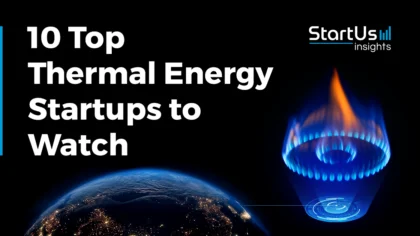
![Discover the Top 10 Wind Energy Trends & Innovations [2026]](https://www.startus-insights.com/wp-content/uploads/2025/07/Wind-Energy-Trends-SharedImg-StartUs-Insights-noresize-420x236.webp)

